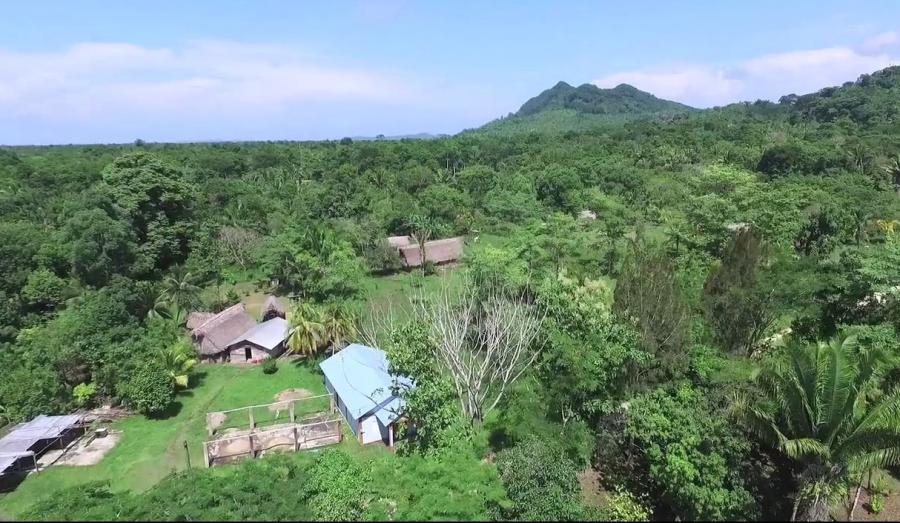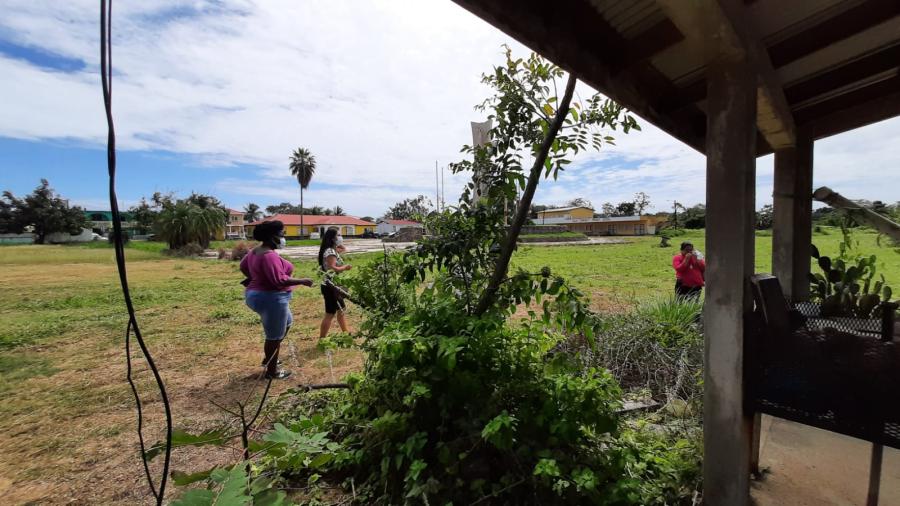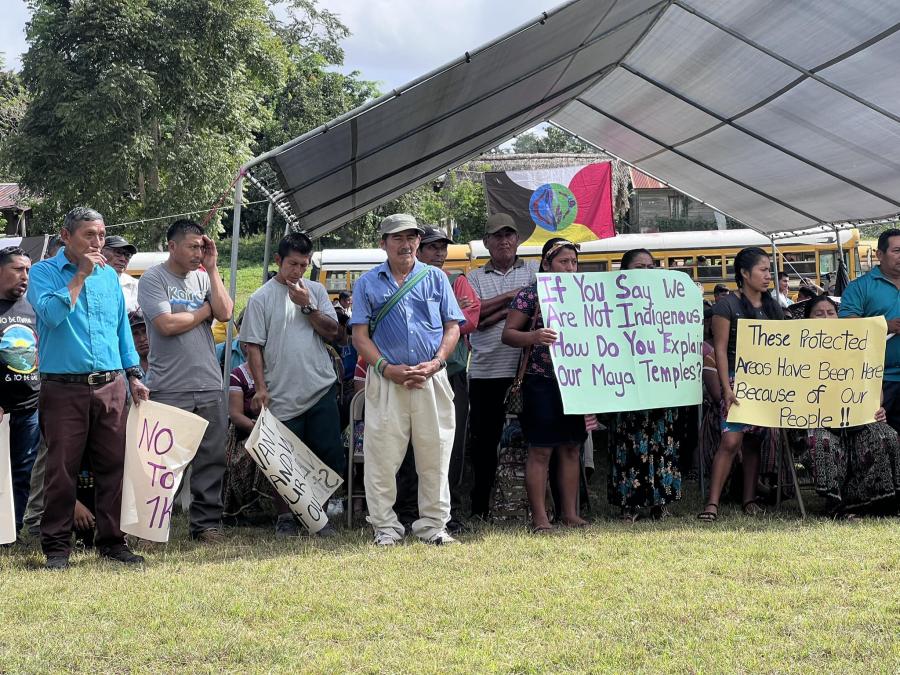The Maya have lived in Central America for many centuries. They are one of the many Precolumbian native peoples of Mesoamerica. In the past and today they occupy Guatemala, adjacent portions of Chiapas and Tabasco, the whole of the Yucatan Peninsula, Belize, and the western edges of Honduras and Salvador. The Maya speak many different languages, as, for instance, Quiché and Cakchiquel of the highlands, and Chol, Choirti, and Yucatecan of the lowlands to name only some. They generally possess a common physical type, and they "share many cultural characteristics, such as common, native deities, similar cosmological beliefs, and the same calendar. There is a strong case for peoples of a Maya heritage having occupied Guatemala and the immediately surrounding territories for the past four thousand years.
Their history over these four millenia is one of remarkable advance and achievement. Traditionally hunters and food-collectors, about 2000 B.C. These ancient native Guatemalans began to become primarily dependent upon agriculture. Maize was their principal staple, supplemented by native beans and other cultigens. The earliest sedentary village communities were small, consisting of a dozen or so houses. The art of pottery-making was known although the products were relatively simple. Cotton and other fibers were woven. Tools and weapons were of stone. Religious or ritual paraphernalia was simple - pottery figurines and simple incensarios. Archaeologists find the earliest examples of specialized architecture in these villages. At first, platforms or buildings were relatively small but later some of these are of a size to suggest that they were corporate labor constructions.
After 1000 B.C., Maya society began to evolve from a simple egalitarian one to a more complex and non-egalitarian order. Large and elaborate pyramids and platforms were constructed. These represent mass labor operations under centralized direction. Sophisticated architectural features made their first appearances: balustraded stairways, plinths and apron-moldings on terraces, and the corbelled vault. Major buildings, the palaces and temples of an aristocratic ruling class, occurred in major centers - the often referred to "ceremonial centers," "politico-religious centers," or "cities" of the Maya. Major centers were so spaced geographically that it is reasonable to believe that they were the "capitals" of territorial polities. Within their respective territories were small villages where, presumably, much of the supporting peasant population resided. With this increased settlement, and inferred socio-political complexity came other significant cultural changes. Ceramics grew more complex. Elite or upper-class burials became differentiated by valuable grave goods as well as by specialized tomb construction. Among the elite grave goods, as well as in other elite contexts, were exotic items brought into these centers from coastal locations or, in the case of lowland sites, from the distant highlands. Trade, organized by and in the hands of the elite, became a major institution.
Foreign stimuli can be detected in the particular forms of the cultural elaborations. Olmec influences were assimilated into the emerging Maya civilization. The ways and routes by which this took place are complicated and still not fully understood. It is important to make clear, however, that this was no simple transference of a complete Olmec or a complete Highland-Pacific cultural system to the Lowland Maya. Stimuli were provided, but the ideas so passed were reworked and emerged quite differently. They became fully Mayanized, and in the artistic and intellectual realms the Lowland Maya far exceeded any other peoples.
Maya intellectual activity includes a long and ancient record of literate accomplishments as evidenced by the Dresden Codex and a few other Precolumbian Maya manuscripts. These native American books, in which the only true writing of the Precolumbian world is recorded, were prepared on bark paper and written in brush strokes which present hieroglyphic texts dealing with histories, astronomical observations, and astrological prophecies. Hieroglyphic texts, too, are found carved in stone on major buildings and on the stone stelae or dedicatory markers set up to commemorate Maya rulers and the events of their reigns. Experts are now able to tell us of births, accessions to thrones, wars, and deaths of rulers and their families. Calendrics, astronomy, and mathematics were highly developed. Several calendars, including a knowledge of a 365 day (plus a fraction) year, a Venus year, a 260 day period, and a day count of time beginning back at a mythical starting point in 3114 B.C. were maintained. Astronomical observations were carried out over long periods of time, enabling the Maya to predict such events as solar eclipses. To cite only one example of mathematical sophistication, the Classic Maya had developed the concept of zero and possessed a sign for it which is recorded on their calendrical inscriptions.
In the fourth century A.D. the Maya, both at their greatest city or center of the lowlands, Tikal, in the Guatemalan Petén, and at Kaminaljuyu in the Guatemalan highlands, were in some way profoundly influenced by Teotihuacan and its civilization, based in the Central Mexican highlands. The Maya assimilated new ideas, new traits, and, perhaps for a time, new rulers, but reasserted their own cultural integrity after the wave of Teotihuacan influence had passed.
Between A.D. 600 and 800, the Classic Maya civilization reached its zenith, in population numbers, numbers of ceremonial centers and general architectural and artistic elaboration. Virtually all of the centers or cities that had once flourished continued in use and, in addition, many new centers came into being.
Shortly after A.D. 800, the Maya of the southern lowlands entered upon an era of troubles. The causes for this are not altogether clear, but there can be little doubt that they involved competition and conflicts with Mexican peoples to the west and north. Probably, Maya-speaking peoples of Gulf Coast Tabasco were involved - tribes which had been in contact with their Mexican neighbors for a longer time and who had acquired some of their more warlike customs. Gradually, between A.D 800 and 900, the old centers and cities of the southern lowlands, such as Tikal and its neighbors, were deserted. For awhile power seems to have shifted to northern Yucatan. After about A.D. 1200, there was a Maya revival of sorts, focused on a new city, Mayapan.
When the Spaniards arrived in Yucatan in the early 16th century the area was, however, completely Maya-speaking. Some Toltec or Central Mexican place names remained, but the alien incursions of a few centuries before had been absorbed. The highlands, too, suffered some Mexican incursions. Here, again, Mayan traditions, peoples, speech, and ancient customs prevailed - as they do even today.
We see in the Maya heritage a remarkable cultural unity and integrity that has been maintained over a sizable territory (the present national state of Guatemala and portions of bordering states) for almost 4,000 years. During that time the Maya built one of the most brilliant Precolumbian civilizations of the Americas. They were a notably non-expansionistic, self-contained people. Unlike some of the Mesoamerican neighbors, they were not interested in empires. They were frequently impinged upon by others - the Teotihuacans and the Toltecs and the imperialistic Aztecs and the Spanish. But, in their own way, they resisted all of these imperialisms, rejecting some things completely, absorbing others, and reworking still other traits and ideas of their invaders to conform to their own Maya traditions. As their wise men wrote in the books of the Chilam Balam, they looked upon-all of these outlanders as vulgar barbarians, like plagues to be endured, but they were always firm in their conviction that, despite foreign evils, they, the Maya, would persist.
Article copyright Cultural Survival, Inc.



